Coleus is a magnificent tropical plant, noted for the beauty of its colorful, mottled foliage.
Summary of Coleus facts
Name – Coleus
Family – Labiaceae
Type – perennial, indoor plant
Exposure – shaded
Soil: ordinary & well drained soil mix – Foliage: evergreen – Flowering: summer → early fall
It can be grown in the garden during summertime, and also indoors over winter: it adapts perfectly.
Planting coleus
When you purchase your coleus in a pot, it’s ready for planting either in a garden box or in the ground. It loves fertile and moist soil.
Planting coleus outdoors
Coleus is only grown outdoors in summer for temperate climates, because it fears the cold when temperatures drop below 50°F (10°C).
In a garden box, you can plant your coleus in a good soil mix.
- In a flower bed, mix garden soil with planting soil mix.
- Best select a partially shaded location, especially in summer if the afternoon hours are very hot.
- Water regularly after planting.
- Bring the garden boxes inside before the weather gets cold.
Planting coleus indoors
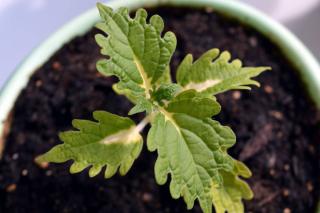
It isn’t mandatory to repot your coleus immediately after purchase, unless the roots show that they’re feeling squeezed.
- Repotting in a pot of a slightly larger size is recommended at the end of every winter.
- From mid-May onwards, the plant can be brought outdoors.
Caring for coleus
Coleus isn’t a very picky plant but it does need some attention, especially to protect and preserve its nice colored, spotted leaves.
- Pinch the tip of each stem often.
- Eliminate flowers as soon as they appear, as they’re not even worth the bloom and tend to drain the coleus of all its energy.
- Ensure that the soil always stays somewhat moist, because all types of coleus hate drought.
Adding fertilizer isn’t a requirement, but it may be an option if you notice that the leaves start turning pale or white. This shows that the soil has become too poor.
Keeping the coleus leaf colors bright
The colored leaves are the reason for growing the coleus plant, it ranges from red to pink, from green to white and from yellow to brown.
To ensure that this magnificent coloration stays true, the coleus plant requires sunlight, while avoiding situations that would scorch it.
Best exposure for your coleus
Outdoor coleus
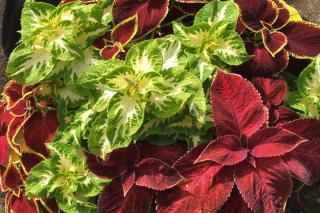
Pick a spot that is partly shaded over, with a bit of sun in the morning or passing rays in the afternoon.
Indoor coleus
In winter, it’s great to give it as much light and sun as you can for most of the day, to ensure it grows and develops and try to keep all the leaves attached.
In summer, however, refrain from placing your coleus near a window facing south, because the sunlight would burn the plant.
Learn more about the coleus plant
Coleus is certainly one of the most beautiful leaf plants to grow at home. With such bright colors, this amazingly easy plant to care for is ideal for pots or garden boxes.
It actually fits right in on any terrace or balcony in summer or indoors in winter. But feel free to also include a few specimens in the middle of your flower beds, you’ll notice that it interestingly catches the eye.
Although its leaves are very similar to those of stinging nettles, there’s nothing to worry about because it is neither invasive nor urticant.
Diseases and parasites that impact coleus
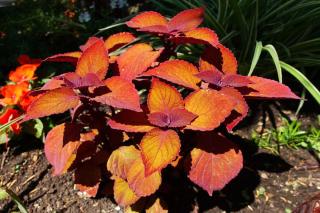
- Here is how to effectively fight mealybugs or scale insects off.
There are also other parasites like a couple famous bugs, the red spider mite indoors and aphids in summer. Snails and slugs show signs of interest in moist weather.
Smart tip about coleus
Coleus is very easily propagated with cuttings from stems that aren’t bearing flowers.
Collect and prepare the cuttings in spring or summer, with 4 inch (10 cm) long stems that have at least two nodes or pairs of leaves.
- Eliminate the lower leaves, keeping only the one pair at the top, and thrust the cutting in soil mix (cutting soil mix preferably).
- Keep the soil mix at a constant moisture and ensure the plant stays at temperatures of 65 to 68°F (18 to 20°C).


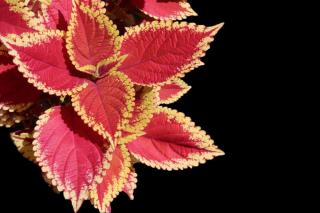

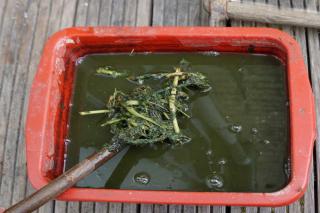
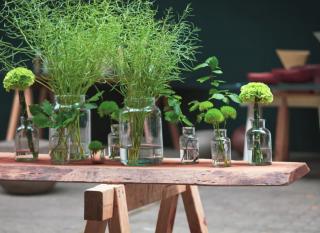
I have a question
Ask my questionI'd like to comment
Post a commentNo comments yet – be the first to share your thoughts!